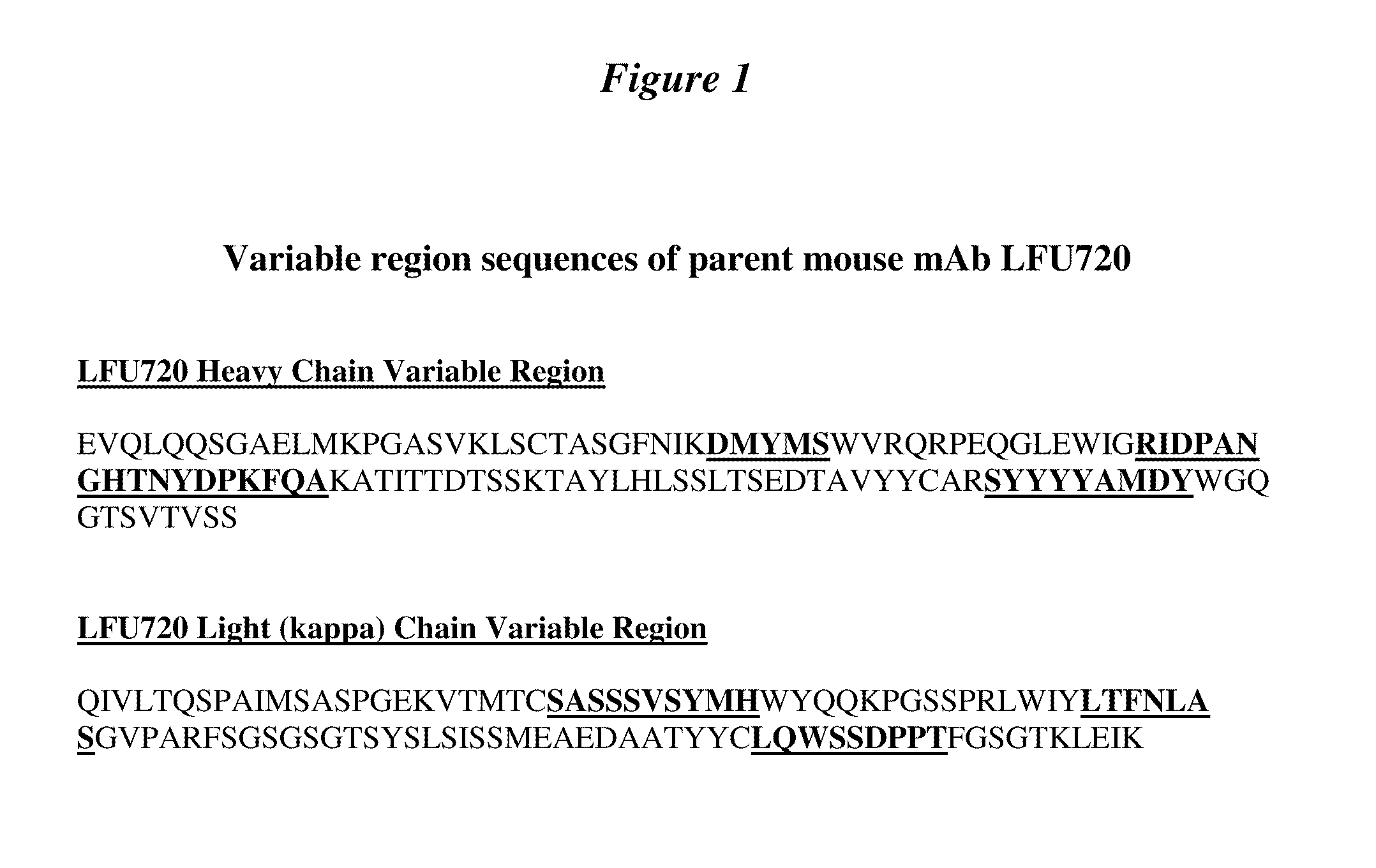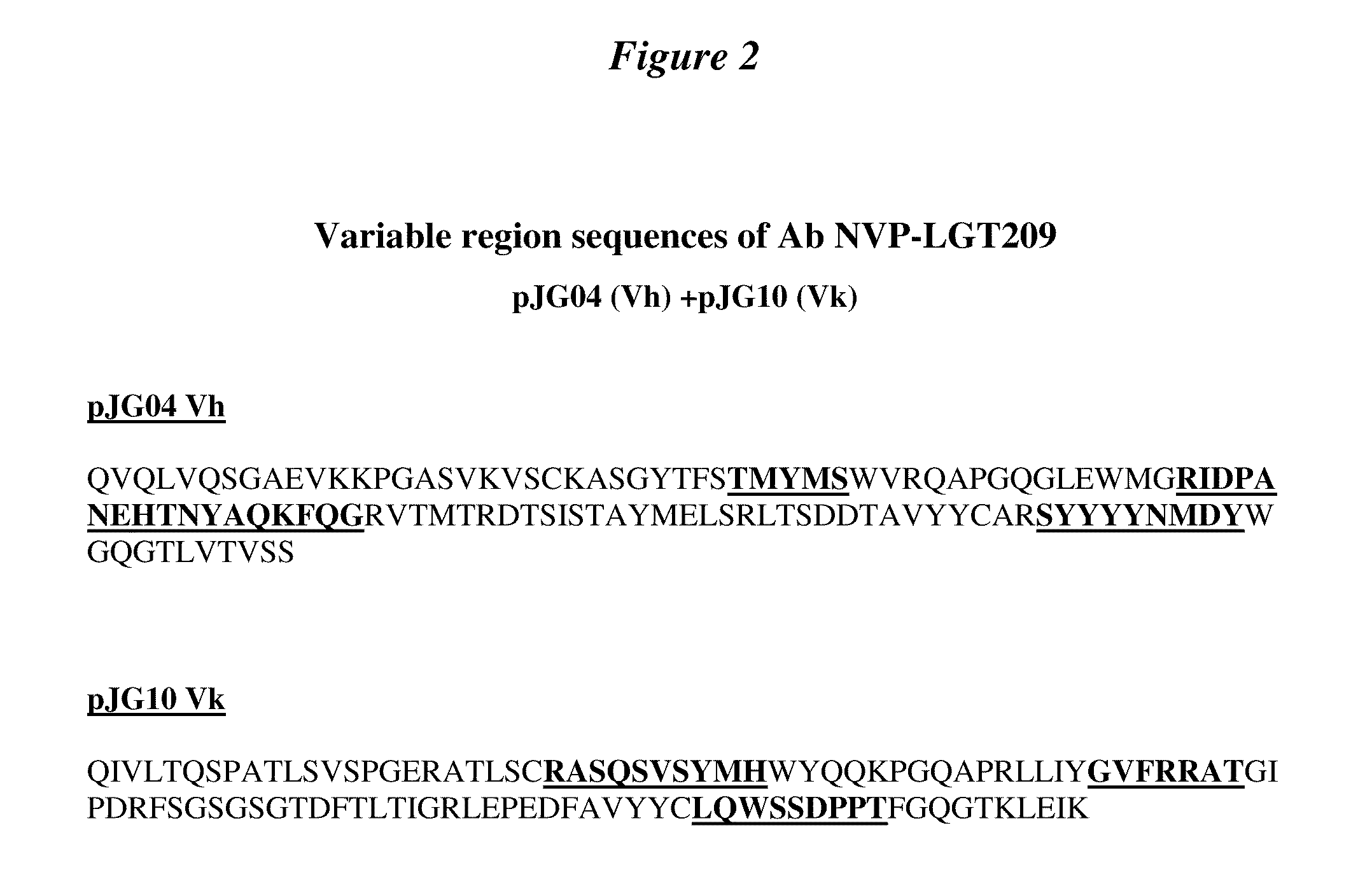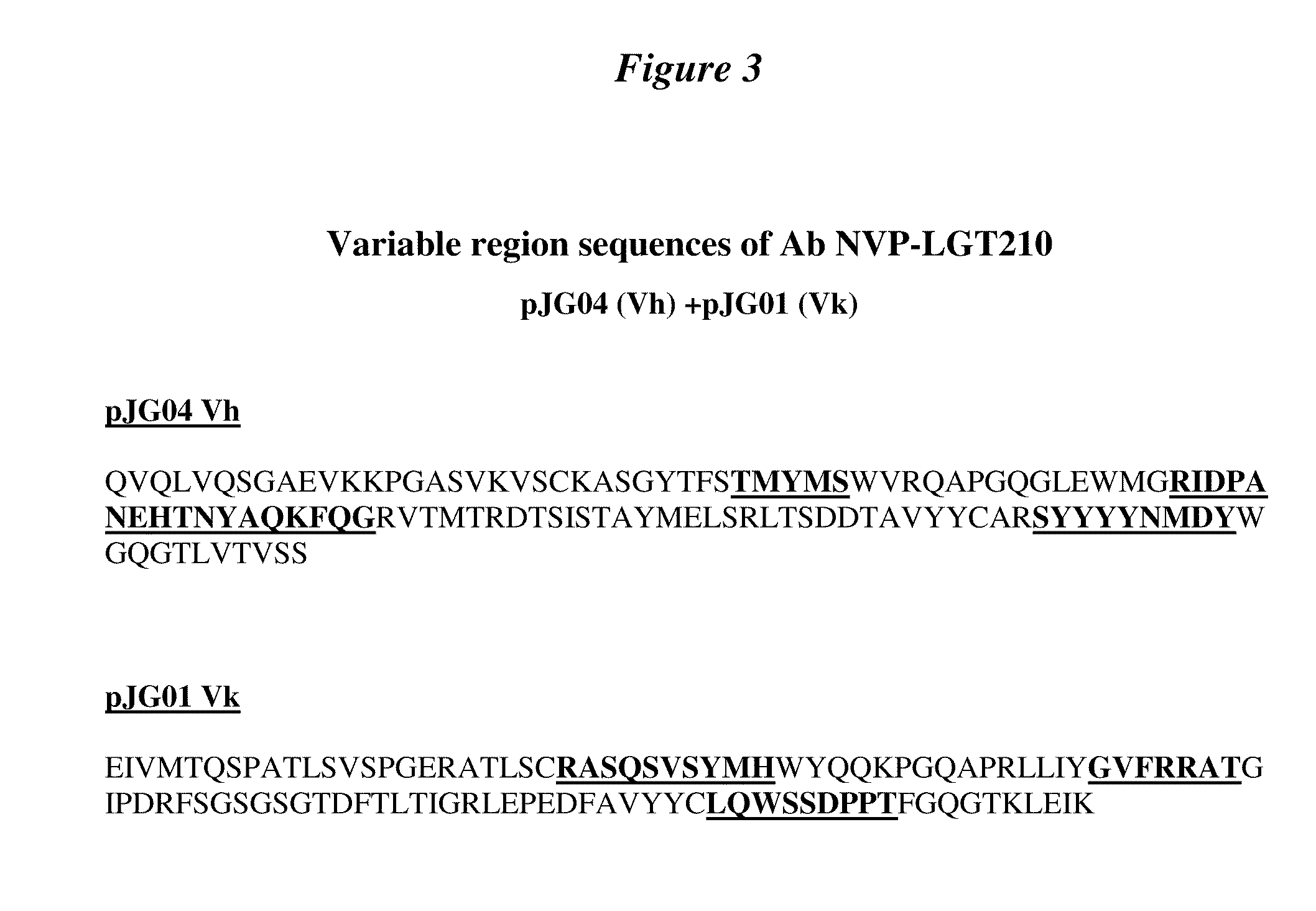Pcsk9 antagonists
a technology of pcsk9 and antagonists, which is applied in the field of antibody antagonists against pcsk9, can solve the problems of known potential deamidation and on-rate defects, and achieve the effects of preventing or ameliorating, reducing severity and preventing
- Summary
- Abstract
- Description
- Claims
- Application Information
AI Technical Summary
Benefits of technology
Problems solved by technology
Method used
Image
Examples
example 1
Generation and Identification of the Pcsk9 Antagonist NVPLFU720
SUMMARY
[0249]Studies were performed to generate a functional antibody antagonist against Pcsk9. Multiple hybridomas were identified that secreted an antibody capable of binding to a His-tagged version of the protein. Antibodies from hybridomas were evaluated for functional antagonist activity as measured by their ability to inhibit Pcsk9-mediated degradation of the LDL receptor on HepG2 cells resulting in an increased ability of these cells to take up LDL cholesterol. A potent functional murine anti-human Pcsk9 IgG1-kappa monoclonal antibody was identified and designated as NVP-LFU720 (LFU720).
Methods
Antigen and Other Proteins
[0250]A stable expression cell line secreting human Pcsk9 protein was generated by transfection of HEK293 Freestyle™ cells (Invitrogen, Carlsbad, Calif.). Briefly, the cells cultivated in Freestyle™ medium (Invitrogen) plus 10% fetal calf serum in adherent mode on BioCoat flasks (Becton Dickinson) w...
example 2
Creation of PCSK9 Antagonist Antibodies NVP-LGT209, NVP-LGT210 and NVP-LGT211
INTRODUCTION
[0268]This example describes the generation of human antibodies NVP-LGT209, NVP-LGT210 and NVP LGT211 by engineering the murine monoclonal PCSK9 antagonist antibody NVP-LFU720 to have greater sequence homology to a human germline antibody. NVP-LGT209, NVP-LGT210 and NVP LGT211 retain the epitope specificity, affinity, and cynomolgus macaque PCSK9 cross-reactivity of the parent murine antibody, NVP-LFU720. NVP-LGT209, NVP-LGT210 and NVP LGT211 have much higher homology to the human germline sequence than the original murine antibody and should therefore be better tolerated by the human immune system.
[0269]Mouse monoclonal antibody LFU720 was Humaneered™ to bring its protein sequence closer to a human germline sequence and decrease its immunogenicity. Humaneering™ technology is available through KaloBios of South San Francisco (on the worldwide web at kalobios.com). Antibody Humaneering™ generates...
example 3
Mutational Analyses of PCSK9 Antagonist Antibodies NVP-LGT209, NVP-LGT210 and NVP-LGT211
[0305]Variants of PCSK9 Antagonist Antibodies NVP-LGT209, NVP-LGT210 and NVP LGT211 were evaluated for their ability to bind to PCSK9. The results are summarized as follows:
[0306]With respect to the heavy chain CDR1, TMYMS (SEQ ID NO:66), only clones that contain the original mouse residues (in bold) retain the binding kinetics of mouse Ab (as determined by biolayer interferometry analysis). Therefore, these residues within the heavy chain CDR1 play a role in binding.
[0307]With respect to the heavy chain CDR2, RIDPANEHTNYAQKFQG (SEQ ID NO:74), residues in bold were not altered in antibody binders pulled out of a library encoding either original (mouse) residue or the corresponding residue in the closest human germline sequence at each position (screened by ELISA). Therefore, the bolded residues play a role in binding. Conservative substitutions are tolerated at the position indicated by the under...
PUM
| Property | Measurement | Unit |
|---|---|---|
| Fraction | aaaaa | aaaaa |
| Fraction | aaaaa | aaaaa |
| Time | aaaaa | aaaaa |
Abstract
Description
Claims
Application Information
 Login to View More
Login to View More - R&D
- Intellectual Property
- Life Sciences
- Materials
- Tech Scout
- Unparalleled Data Quality
- Higher Quality Content
- 60% Fewer Hallucinations
Browse by: Latest US Patents, China's latest patents, Technical Efficacy Thesaurus, Application Domain, Technology Topic, Popular Technical Reports.
© 2025 PatSnap. All rights reserved.Legal|Privacy policy|Modern Slavery Act Transparency Statement|Sitemap|About US| Contact US: help@patsnap.com



